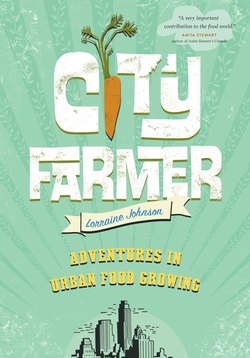City Farmer

Реклама. ООО «ЛитРес», ИНН: 7719571260.
Оглавление
Lorraine Johnson. City Farmer
Отрывок из книги
ADVENTURES IN
URBAN FOOD GROWING
.....
Marc Xuereb, a public health planner with the Region of Waterloo Public Health department in Ontario, conducted a study, published in 2005, that looked at fifty-eight commonly eaten imported foods, all of which could be grown or raised in Waterloo Region. The study found that the imported items traveled almost 4,500 kilometers on average to reach the dinner tables of that southern Ontario city, producing through transit 51,709 tonnes of greenhouse gas emissions annually (5.9 percent of the greenhouse gas emissions generated by households in the region). The report notes that this is equivalent to more than a quarter tonne per household, or more than 16,000 cars on the road. The study also calculated how the emissions would compare if the imported items were instead sourced locally or regionally, from within a 30-kilometer radius. Under that scenario, greenhouse gas emissions were reduced by almost 99 percent—from 51,709 tonnes for the imported items to 2,224 tonnes for the local items, a savings of 49,485 tonnes. (Even within a distance of 250 kilometers, the local items represented savings, in greenhouse gas emissions, of 96 percent.)
Other studies bring these numbers down to dinner-plate level. The Toronto nonprofit organization FoodShare, for example, went on two shopping trips in 2003 for the ingredients of a typical meal (lamb chops, sweet potatoes, Swiss chard, carrots, salad, and fruit): one trip to a farmers’ market and the other to a supermarket. Using the product labels to compare the origins of the food, they found that the supermarket items traveled, on average, eighty-one times farther than the farmers’ market items. They calculated that a year of choosing local over imported foods would save a half-tonne of greenhouse gas emissions per household.
.....